Introduction
As we recently said, in motherboards it's all about the features. After all, you are getting the same basic chipsets across each market segment (X58, P55, H5x, 890, etc.). Because of this the performance envelope is something like 5-10% difference on average. True, there are some extreme cases where you might see as much as 20%, but those are going to be very expensive products.
To combat this, motherboard manufacturers are finding new ways to add on features to attract buyers. We have seen these manifest as better power regulation, more PCIe slots, multiple BIOSes along with improved audio and LAN chips. Lately ASRock has been taking a somewhat different approach. As we saw in their P55 Extreme4, ASRock is working to add more SATA 3.0 and USB 3.0 ports. On the P55 Extreme ASRock broke out of the typical two of each and managed to pack in four USB 3.0 and SATA 3.0 ports.
So now we move on to the X58 Extreme6. With this board ASRock has bumped up the stakes. Now we find six SUB 3.0 and six SATA 3.0 ports. This is additional to a few other nice features and all for just $234.99 at NewEgg.com. Now we need to see if all of these high bandwidth ports can play well together.
The Box and What's Inside
Package and Contents
The box on the X58 Extreme6 still uses that annoying reflective material. For the most part this will not prevent someone from buying the board, but it can make the information on the box difficult to read in the wrong lighting.
The front of the box has some interesting information and more than a few indicators that ASRock is trying to compete directly with. Well, you can tell who they are going head to head with by the "True 333" logo. We also find that the "6" in Extreme6 stand for "6 core CPU, 6 SATA 3.0 and 6 USB 3.0". The rest of the information is fluff along with one ad for an optional item (Turn your iPhone into a Wii controller).
The back of the box contains more information on features and a rehash of that ad for the ASRock AIW. I am not sure why this is there, if that option is not included. I could not find the software, a link to how to get it on iTunes or anything other than a link to ASRock's site inside the box. To me this is a tiny bit annoying.
Inside the box is a nice assortment of goodies. You have a Tri SLI bridge along with the standard SLI Bridge (although no Crossfire Bridge). You also have an extra USB 3.0 bracket. This can be mounted inside a 3.5-inch bay or you can use the included tang and place it in one of the peripheral slots on the back of your system.
Also inside the box is the board itself; covered in stickers to let you know all the things you might have missed on the outside. Personally I do not like the inclusion of stickers on the boards, as I have seen them leave residue on the ports.
The Motherboard
The Board
Looking at the actual board (once you get the stickers off), we do see that it is fairly well laid out. ASRock has made some pretty obvious design choices with air flow and cooling in mind.
Taking a look at the area around the CPU, we see that everything looks like it has been shifted towards the edges of the board. There is very little room between the 24-pin ATX port and the RAM slots. This should not be an issue unless you want to use a RAM cooler when it might get a little cramped.
We also see that ASRock is still giving you the option to use older fans for the 775 socket on this board. While I like the thought behind it, I would be concerned that some of the lower end 775 coolers would not be enough to keep a Core i7 cool.
The shifting of the components is even more evident when we take a look behind the cooling for the CPU power regulation. The space for the 8-pin aux connector is very small. Although this does not affect plugging the cable in when on our test bench, we have a feeling that once it is in a case you might have more difficulty.
The lower half of the board has been setup to potentially allow you to run Tri SLI with a little more room between the GPUs than you normally would get. Of course, if you are going to go for a Tri SLI setup you should be aware that the last PCIe x16 slot is only x8 electrical. You can tell this by looking at the number of pins visible in the slot (it is also in the manual). Also visible in this picture are two of the three NEC USB 3.0 controller chips. There is something else that I want to draw your attention to, though.
At the top of the peripheral slots we see a four-pin Molex connector for PCIe board power. Now this is not a bad thing (except for a minor placement issue), but the cluster of fan headers right next to it is. They are very difficult to reach and to use once inside a case. The extra headers are a great idea; they just need to be better spaced.
Now I know some of you are wondering how ASRock managed to stuff six USB 3.0 and SATA 3.0 ports onto this board. After all, just putting in two of each pushes the limit of PCIe lanes available in the X58 chipset. Well, the way they did it was to follow the ASUS method (after all, they are still part of ASUS). They dropped in a PLX bridge to handle the extra load.
Of course, even with this we are still near the upper limit when there are that many extras on the board. We have to wonder what would happen if this board were loaded up with multiple USB 3.0 and SATA 3.0 devices. Unfortunately we do not currently have the pieces to try this out, but perhaps in the near future we can take another look at it.
Moving over to the leading edge of the board (the lower half), we see the ICH10R along with a few other items. You can see the three Marvell SATA 3.0 controllers just above the ICH10R and also the third NEC USB 3.0 controller right next to the Diagnostic LEDs. This runs the header that is included with the board (the light blue set of pins next to the Power and Reset switches).
Looking at the I/O side of things, we find the typical setup with the obvious exception of the four blue USB 3.0 ports. Even the back mounted Clear CMOS button is now a common thing.
Still, I like the fact that ASRock has not abandoned PS/2 just yet. This helps with the positioning as a value option for the X58 market space.
BIOS and Overclocking
BIOS
The BIOS on the ASRock X58 Extreme6 is fairly typical of an ASRock product. They use a customized AI BIOS (the version we used was P1.00). The main page shows you the "at a glance" information about your system and also lets you set the date and time.
The OC Tweaker page is of a little more use to the enthusiast or overclocker (yes, they are different). Here you can use one of the two available EZ options (RAM and CPU) to setup an overclock with minimal effort.
Both of these options are controlled by simple drop down menus. Once you select a setting the system will automatically adjust the rest of the settings for the best stability (i.e. voltage QPI etc).
The rest of the OC Tweaker page is what you have come to expect from ASRock. They have put in more than enough voltage controls and tweaks to keep the majority of people happy (at this level anyway). There is an interesting option that caught our eye, though; SSD Performance Mode. We ran all of our tests with this on and will be looking to see if there is any improvement in performance over the other boards in our testing group.
There are other areas in the X58 Extreme6's BIOS that you will want to visit as well. One of these is the Advanced CPU Settings page. Here are some little extras that can improve performance at both stock speeds and when you are trying to overclock. Turning off items like SpeedStep can help with pushing the CPU farther while the C-State can let you improve performance with multi-threaded applications.
The Advanced Chipset settings mostly control the peripherals and their states on the board. However, there are a few here that are not all that common like the QPI L0s and L1, APMC Control and even the CIR10 settings.
The Storage Configuration page is important as ASRock gives you a fairly large amount of control for the 12 SATA ports that are on the X58 Extreme6 (six SATA II and six SATA 3.0).
The last page of note is the H/W Monitor. This page allows you to check the system temperatures and voltages. It also has the controls for setting up automatic fan performance.
Overclocking
When it comes to overclocking the X58 Extreme6 does not do bad, but I think it could have done much better. We had stability issues at 4.2GHz that we could not get around and maintain using all of the functions of the board. We were able to disable some items like Audio and the extra SATA 3.0 controllers and get closer to stability, but that sort of defeats the point of our overclocking test.
In the end we found that we could run stable at 174*24 for a final clock of 4.176GHz. Top get there was pretty simple, though. We started out with the EZ CPU overclocking and pushed up to 4.2GHz; from there we backed things down to reach our final stable OC.
You can see the validation for the ASRock X58 Extreme6 here.
As all overclocking results are dependent on the hardware you use, your results may vary. Results of our overclocking tests are included in the performance section with the stock scores.
Important Editor Note: Our maximum overclocking result is the best result we managed in our limited time of testing the motherboard. Due to time constraints we weren't able to tweak the motherboard to the absolute maximum and find the highest possible FSB, as this could take days to find properly. We do however spend at least a few hours overclocking every motherboard to try and find the highest possible overclock in that time frame. You may or may not be able to overclock higher if you spend more time tweaking or as new BIOS updates are released. "Burn-in" time might also come into play if you believe in that.
Test System Setup and Comments

We would like to thank the following companies for supplying and supporting us with our test system hardware and equipment ASRock, Intel, ASUS, Corsair and Sceptre.
Working with the X58 Extreme6 was pretty simple. The layout is clean enough that we had no issues getting everything setup and installed. The only problem that I personally had with the system was the sheer amount of shovelware that comes with the full installer. For some reason it pushed a ton of items onto the desktop. Even at 1920x1080 resolution we had a full column of icons right from a fresh install! Some of these do not need to be desktop icons at all.
We also were not happy to find that much of the "value" bundle only comprised demos or trial versions of software. I hate to say it, but the installation of something that has limited use is not a value; it is much more of an annoyance. True, there are a lot of items there, but I would rather have one full version of a really good piece of software than five trial versions.
Most consumers are going to feel the same way, so I think ASRock could do better here. After we got past the issues with the shovelware and bundled software, we quickly had things moving.
Synthetic Tests - Part I
With any system you will want to see a combination of synthetic testing and real-world. Synthetics give you a static, easily repeatable testing method that can be compared across multiple platforms. For our synthetic tests we use Everest Ultimate, Sisoft Sandra, FutureMark's 3DMark Vantage and PCMark Vantage, Cinebench as well as HyperPi. Each of these covers a different aspect of performance or a different angle of a certain type of performance.
Memory Bandwidth
Memory is a big part of current system performance. In most systems slow or flakey memory performance will impact almost every type of application you run. To test memory we use a combination of Sisoft Sandra, Everest and HyperPi 0.99.
Sisoft Sandra
Version and / or Patch Used: 2010c 1626
Developer Homepage: http://www.sisoftware.net
Product Homepage: http://www.sisoftware.net
Buy It Here
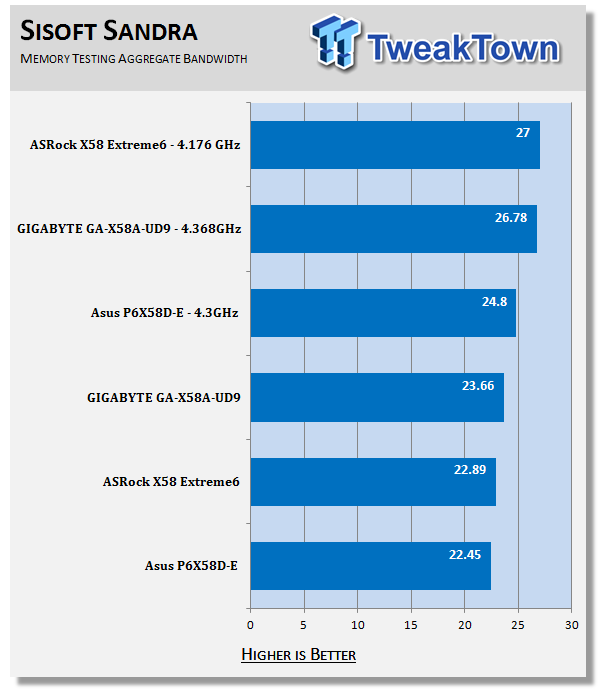
The X58 Extreme6 is about average when it comes to memory performance, although we did get much better results with our Corsair memory at higher clock and memory speeds. Still, these will be different from system to system as each overclock is going to be a little different. But if we can combine this with good HDD performance then the Extreme6 could more than make up for this.
Everest Ultimate
Version and / or Patch Used: 5.30.1983
Developer Homepage: http://www.lavalys.com
Product Homepage: http://www.lavalys.com
Buy It Here
Everest Ultimate is a suite of tests and utilities that can be used for system diagnostics and testing. For our purposes here we use their memory bandwidth test and see what the theoretical performance is.
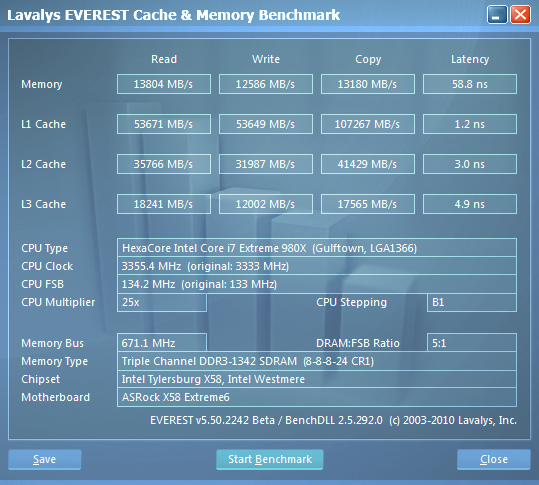
Stock Memory Performance
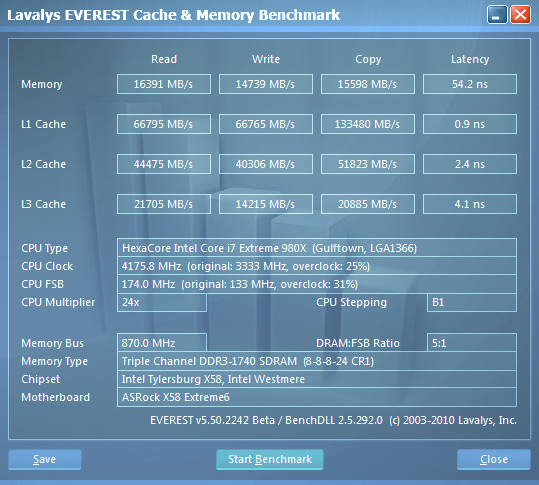
Overclocked Memory Performance
Here we once again see that the memory performance scores are average. But that is not a bad thing. If we see good HDD scores then we could have balanced performance in the rest of our testing suite.
HyperPi 0.99
Version and / or Patch Used: 0.99
Developer Homepage: www.virgilioborges.com.br
Product Homepage: www.virgilioborges.com.br
Download It Here
HyperPi is a front end for SuperPi that allows for multiple concurrent instances of SuperPi to be run on each core recognized by the system. It is very dependent on CPU to memory to HDD speed. The faster these components, the faster it is able to figure out the number Pi to the selected length.
For our testing we use the 32M run. This means that each of the four physical and four logical cores for the i7 and the four physical cores of the i5 is trying to calculate the number Pi out to 32 million decimal places. Each "run" is a comparative to ensure accuracy and any stability or performance issues in the loop mentioned above will cause errors in calculation.
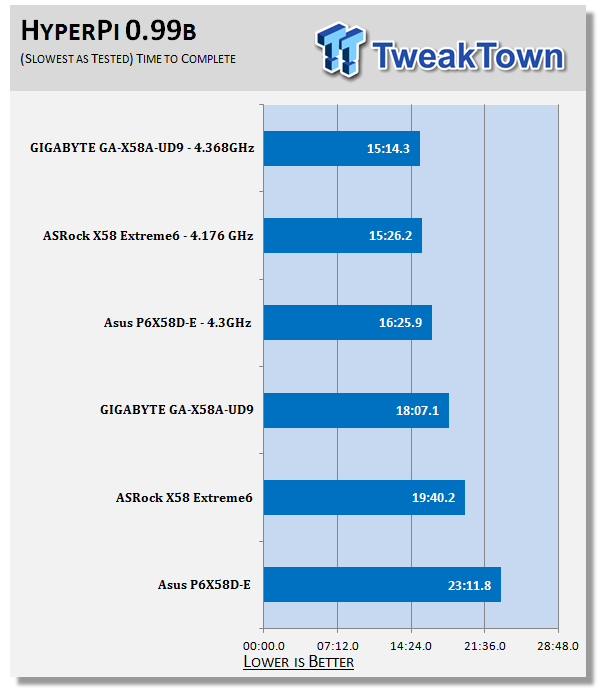
One thing I like about HyperPi is that it loads up the system. If you know the averages for a certain piece of the puzzle you can often find the weak link. What we are seeing here is an indication that our memory performance could be worse than Sandra and Everest were able to show. We can also expect to see issues in performance with applications like LightWave 3D and Perhaps AutoGK.
Synthetic Tests - Part II
Disk Drive Controller
The system drive controller is an important part of system performance. In most modern boards your drive controller will run off of the PCI-e bus. The PCI-e bus performance can be affected by poor trace layout as well as many other design choices that show up on different boards.
For testing we use Sisoft's Sandra and Everest.
SiSoft Sandra

Now we have the final piece of the CPU to Memory to HDD puzzle. Although the scores here are not that far off from the rest of the group, they are off enough that we can draw a conclusion that there is a slight performance loss pulling information from the HDD and getting it into memory, then to the CPU. The good news here is that with the small hit you are taking it can probably be corrected with a few tweaks to the BIOS.
Everest
Stock HDD Performance
Overclocked HDD Performance
Stock USB 3.0 Performance
Overclocked USB 3.0 Performance
Everest tells us a similar tale, although the buffered read during our overclocking test kept showing up with results that were very far off what we should have been getting.
Synthetic Tests - Part III
Here is where we dig out the FutureMark tests.
PCMark Vantage
Version and / or Patch Used: 1.0.0.0
Developer Homepage: http://www.futuremark.com/
Product Homepage: www.futuremark.com
Buy It Here
For overall system performance we use PCMark Vantage. This is run in both x86 and x64 mode to give the best indication of performance.
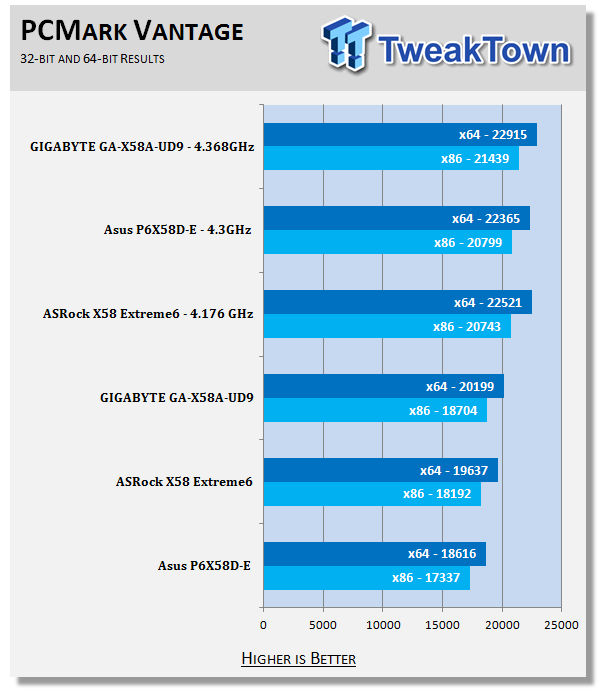
PCMark Vantage shows us what can happen when you have slower than expected HDD and memory speed.
3DMark Vantage
Version and / or Patch Used: 1.0.1
Developer Homepage: http://www.futuremark.com/
Product Homepage: www.futuremark.com
Buy It Here
For synthetic gaming tests we used the industry standard and overlockers bragging tool 3DMark Vantage. This is a test that strives to mimic the impact modern games have on a system. Futuremark went a long way to change from the early days of graphics driven tests to a broader approach including physics, AI and more advanced graphics simulations.
3DMark Vantage uses the DX10 API in addition to having support for PhysX. As we are no longer using an NVIDIA GPU for testing (at least for the time being), you will only see the CPU based PhysX results in the scores. For testing we use the Performance test run.
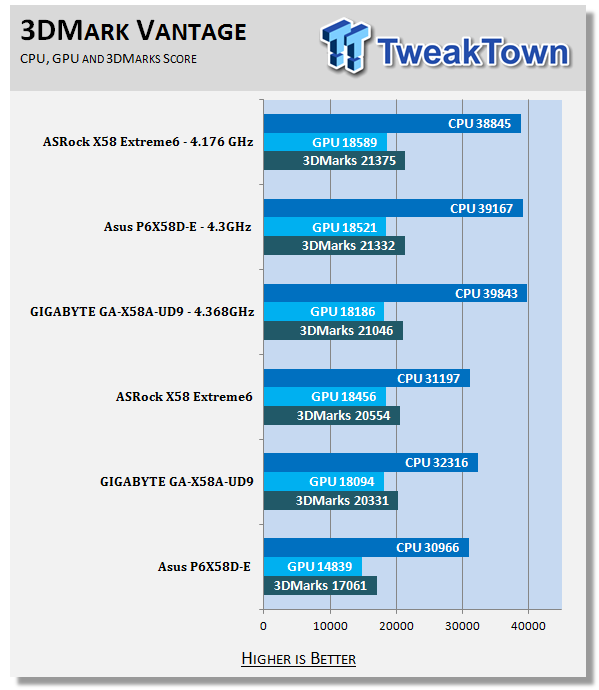
In 3DMark Vantage things turn around a bit. The X58 Extreme6 is ahead in both stock and overclocked testing. Granted, it is not by much, but it is enough. This could be a good indicator for the gamers out there.
Cinebench R11. x64
Version and / or Patch Used: R11.5 x64
Developer Homepage: http://www.maxon.net/
Product Homepage: www.maxon.net
Download It Here
Cinebench is a synthetic rendering tool developed by Maxon. Maxon is the same company that developed Cinema4D, another industry leading 3D Animation application. Cinebench R11.5 tests your systems ability to render across a single and multiple CPU cores. It also tests your systems ability to process OpenGL information.
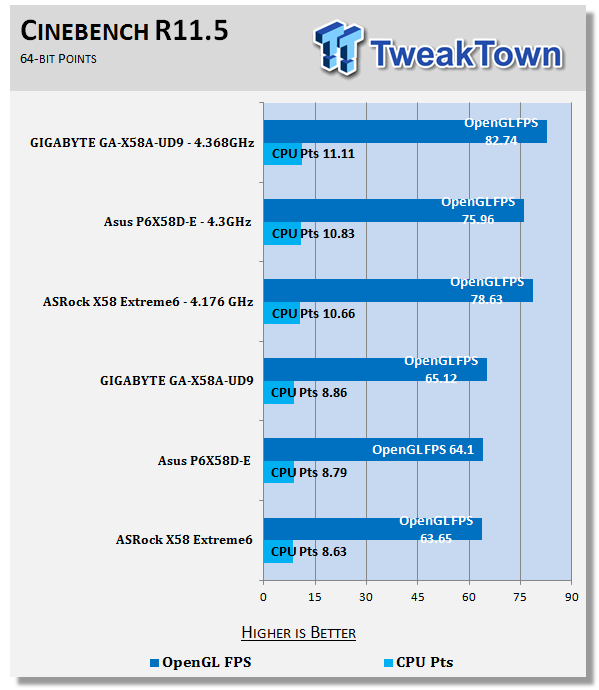
The X58 Extreme6 shows the results of the average memory performance here in Cinebench R11.5. Again, much of this can be corrected with a few tweaks in the BIOS.
Real-World Tests - Part I
Real-world testing allows us to see how well a product will perform when used in the same manner as it would be in your house or office. It is an important side to performance testing as it can uncover hidden glitches in the way a product performs.
It is especially true when testing a mainboard; there are so many components of a board that have to interact that any problems between parts can cause a failure of the whole.
For real-world testing we use some common applications and functions. We test with LightWave 3D for rendering performance, AutoGK for transcoding from DVD to AVI and two games for gaming testing.
Rendering
Rendering of 3D Animation is a system intensive endeavor. You need a good CPU, memory and HDD speed to get good rendering times. For our testing we use LightWave 3D. This software from Newtek is an industry standard and has several pre-loaded scenes for us to use.
LightWave 3D
Version and / or Patch Used: 9.6
Developer Homepage: http://www.newtek.com
Product Homepage: http://www.newtek.com/lightwave/
Buy It Here
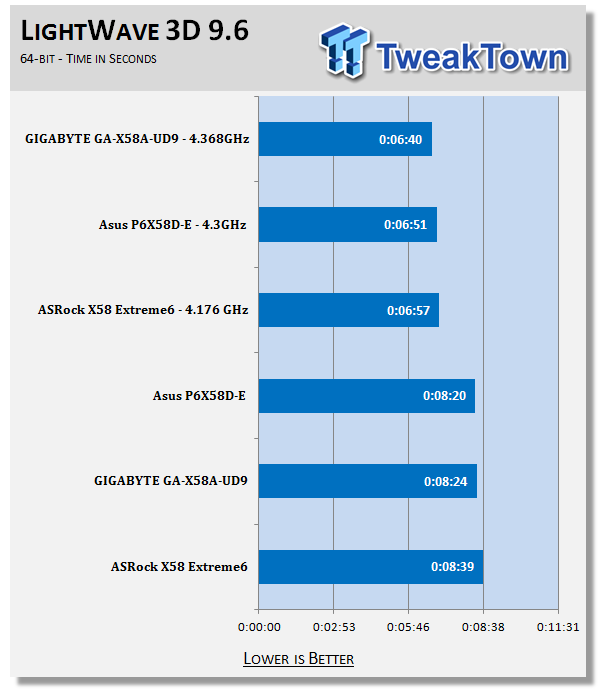
Remember how we said that the average memory performance and lower HyperPi performance would hurt us in heavy CPU to memory applications? Well, LightWave 3D is showing us that right now. For both stock and overclocked testing we see the X58 Extreme6 at the back of the pack.
AutoGK
Version and / or Patch Used: 2.55
Developer Homepage: http://www.autogk.me.uk/
Product Homepage: http://www.autogk.me.uk/
Download It Here
AutoGK stands for Auto Gordian Knot; it is a suite of transcoding tools that are compiled into an easy to install and use utility. It allows you to transcode non-protected DVDs and other media to Xvid or Divx format. For our testing purposes we use a non-DRM restricted movie that is roughly 2 hours in length. This is transcoded to a single Xvid AVI at 100% quality.
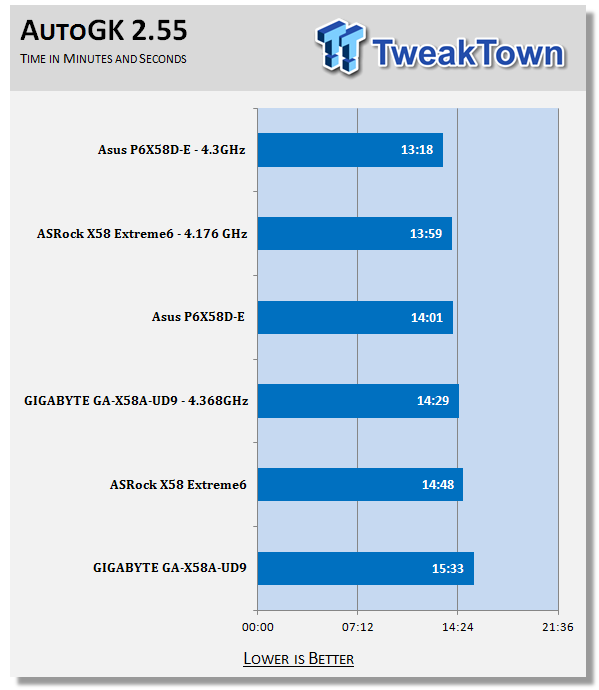
The ASRock X58 Extreme6 was not the slowest board we tested here. It was almost a minute faster than that board. However, it was still not where we would expect an Intel 980X to be in terms of RAW transcoding power.
The reasons? Well, the same as we have been talking about; memory and HDD performance. Once again, though, these can be adjusted for by ASRock with a little more time on the BIOS.
Real-World Tests Part II
Here we have our real gaming tests. Each of the games we chose use multiple cores and GPUs. They are able to stress the system through use of good AI. Both have decent positional audio that adds impact to the sound subsystem of the board. We ran each game through the level or parts listed and recorded frame per second using FRAPS. This brings the whole game into play.
*** A word on gaming as a motherboard test; ***
Despite the fact that most games are very GPU limited, we are still noticing HDD and even audio creating issues in gaming performance. Because of this you may see differences in the number of frames rendered per second between different boards. Usually the difference is very small, but occasionally because of bad tracing, poor memory or HDD performance, this difference is significant. The issues are often more prevalent in older versions of DirectX, but can still pop up in DX10 and 11.
Call of Duty Modern Warfare 2 (DX9)
Version and / or Patch Used: 1.0
Timedemo or Level Used: First combat until the school is cleared
Developer Homepage: http://www.infinityward.com
Product Homepage: http://modernwarfare2.infinityward.com
Most of you know about the game Modern Warfare 2; it caused quite a bit of controversy in the latter half of 2009. The game is a first person shooter with a heavy combat emphasis. It follows the events in the first Modern Warfare very closely and brings back several characters from the original.
As with most games in the Call of Duty franchise, it features a heavy AI load. This is not because of a complex AI routine, but more due to the sheer number of enemies in any given combat situation. It is also our single DX9 based game in our testing suite. Settings are shown below.
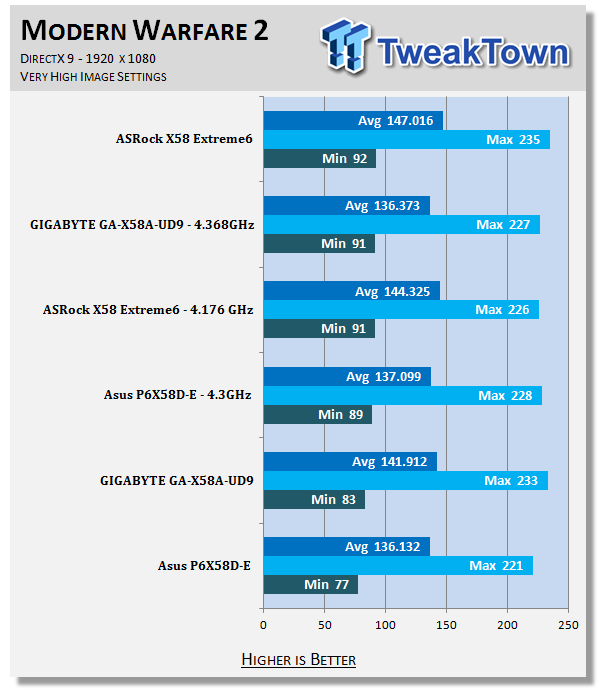
Although you cannot really call this a "win", the X58 Extreme6 has the upper hand (at least a little) in terms of gaming. Of course, once again, the difference is so small that you would not be able to tell visually.
Far Cry 2 (DX10)
Version and / or Patch Used: V1.00
Timedemo or Level Used: Clearing the Safe house through to the Rescue
Developer Homepage: http://www.ubi.com
Product Homepage: http://farcry.us.ubi.com
Far Cry 2 is a large sandbox style game. There are no levels here so as you move about the island you are on you do not have to wait for the "loading" sign to go away. It is mission driven so each mission is what you would normally think of as the next "level".
In the game you take the role of a mercenary who has been sent to kill the Jackal. Unfortunately your malaria kicks in and you end up being found by him. Long story short, you become the errand boy for a local militia leader and run all over the island doing his bidding. Settings we used for testing are shown below.
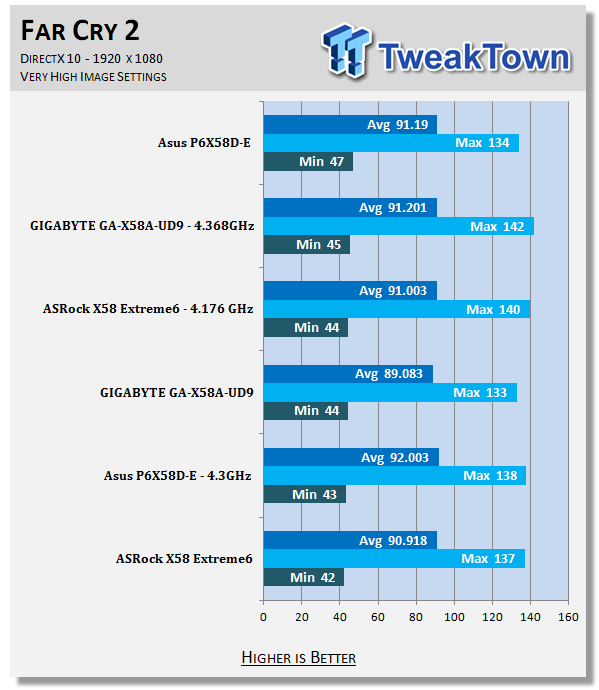
Unfortunately for Far Cry2 things turn around on us. We see the Extreme6 drop back into last place (by a very small margin). This one is interesting as Far Cry2 is supposed to scale with the speed of the CPU. We have to wonder if the memory performance we saw on the X58 Extreme is part of the issue here.
Battlefield Bad Company 2 (DX11)
Version and / or Patch Used: V1.00
Timedemo or Level Used: From washing up on the beach to the mine fields.
Developer Homepage: http://www.ea.com/
Product Homepage: http://badcompany2.ea.com/
Battlefield Bad Company is another sequel and also another game "franchise". Bad Company 2 is also our DX11 Shooter game. The game follows a fictitious B company team on a mission to recover a Japanese defector. This puts you back in World War II (at least for the beginning of the game) while the multi-player game is centered on much more modern combat. For our testing we used the single player mode. Settings are shown below.
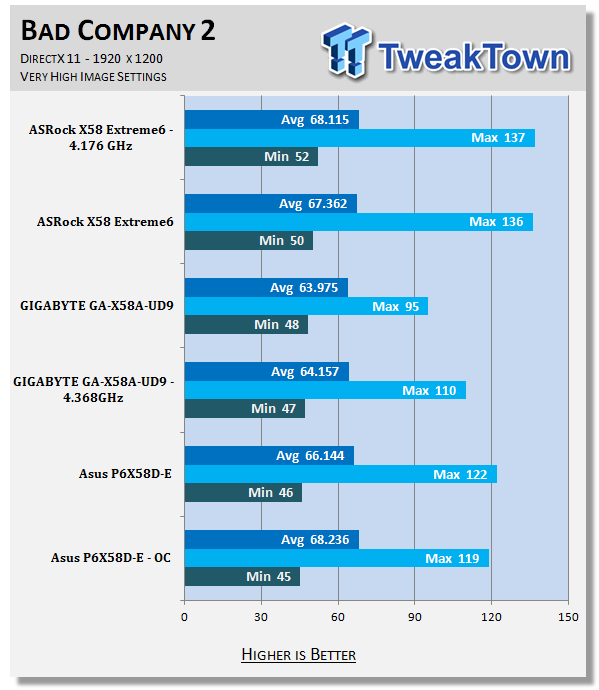
For Bad Company 2 the X58 Extreme6 turns things around and comes out on top. In fact, it manages to oust many of the overclocked boards with its stock scores.
Gaming Conclusion
Gaming is an odd and subjective subject. Although we can detail it out with numbers and put the finger on a winner, we have to remember that in 9 out of 10 test runs the difference is going to be so small that you would not notice. Even here with good results from the X58 Extreme6, it only shows you that this product will not hinder you in gaming. It is also not going to give you a massive advantage. The one good thing we can say is that the extra SATA and USB 3.0 controllers are not going to get in the way of the X58 Extreme6's ability to process graphical information.
Power Usage and Heat Tests
Power Consumption
We are now able to find out what kind of power is being used by our test system and the associated graphics cards installed. Keep in mind; it tests the complete system (minus LCD monitor, which is plugged directly into an AC wall socket).
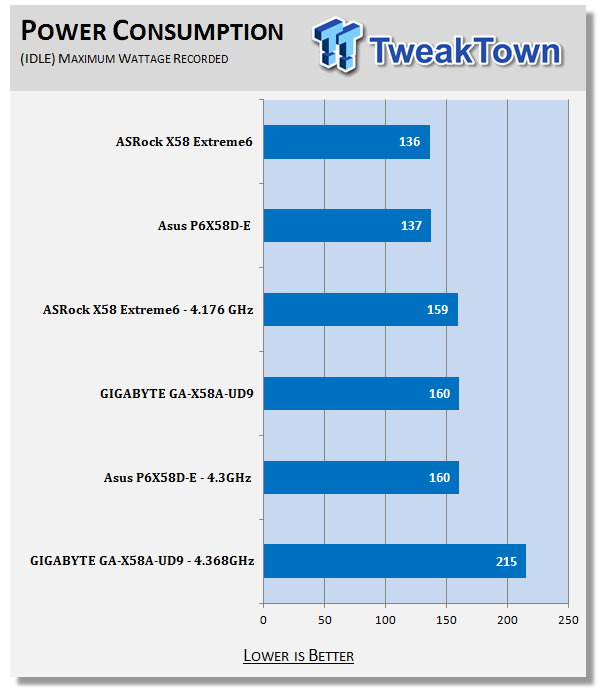
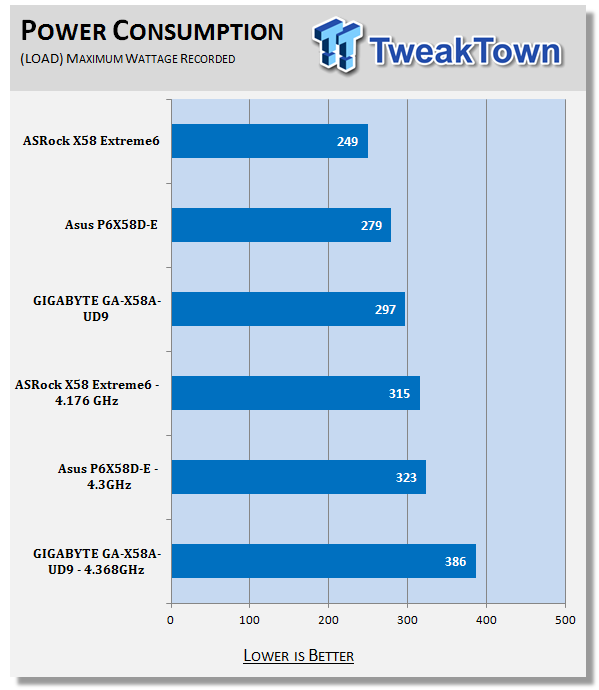
The ASRock X58 Extreme6 is a very power friendly board. While we expected the system to have a much higher power demand (simply due to the number of extra controllers on the board), we certainly did not see that in practice.
Heat Generation
As a new measure, we are now monitoring the heat generation from the key components on the motherboard; this being the Northbridge, Southbridge (if it contains one) as well as the Mosfets around the CPU. The results are recorded at idle and load during the power consumption tests.
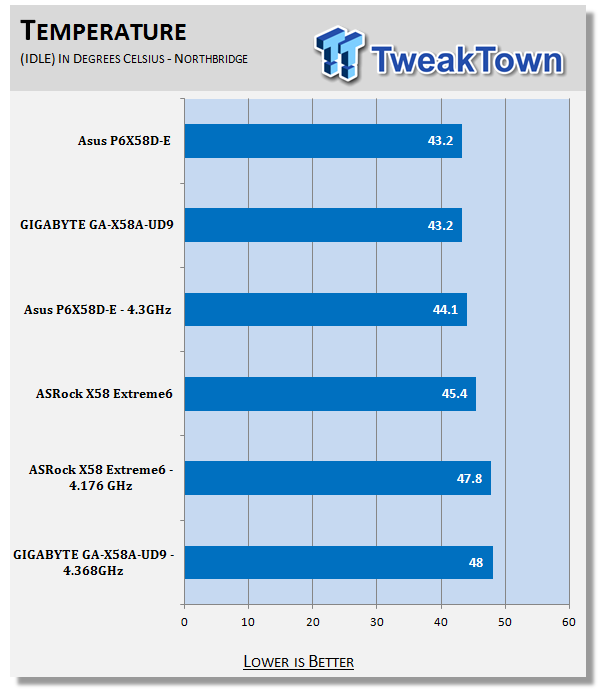
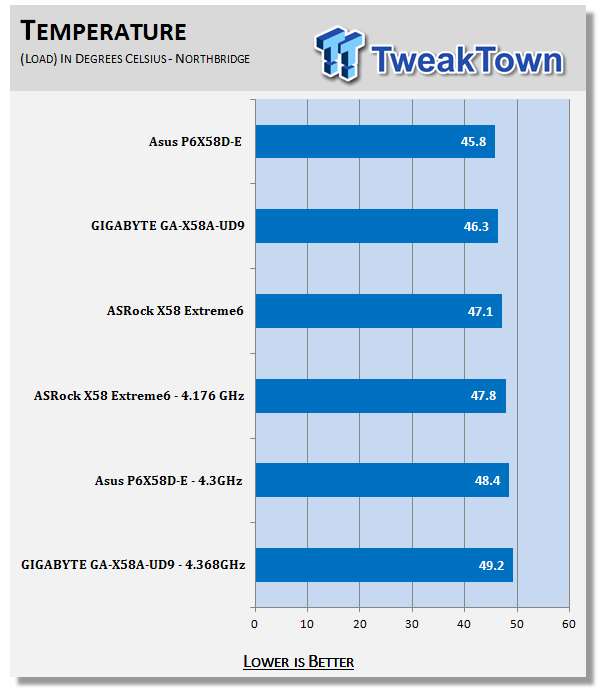
Heat is another item altogether. The much smaller heatsink on the X58 Extreme6 allows the temperatures to build up fairly quickly. It is not a big issue, but is one that needs to be kept in mind while you are planning out your case choices. Make sure you have good air flow over the heatsink for the X58 Northbridge.
Final Thoughts
The ASRock X58 Extreme6 is one of those boards that stands out because of the bold design and feature set. I mean, come on, six SATA 3.0 ports on an Intel board?! That is just nuts, but to add in six USB 3.0 ports as well? They have managed to do this and, as far as we can tell, have not hurt the basic operation of the board.
When SATA 3.0 and USB 3.0 were hitting the market we were told that on the X58 chipset there were enough PCIe lanes to handle the extra load from a set of USB and SATA 3.0 controllers. This means that with the extra lanes from the PLX bridge we saw, the X58 Extreme6 should be able to handle the extra load.
Of course, we were not able to test with Tri SLI or Tri Crossfire and multiple USB or SATA 3.0 devices, so there are some questions remaining on this. However, from what we are seeing the X58 Extreme6 is still a very capable motherboard. Although we did note some memory performance issues (it is only a little below average for the X58 and 980X), we feel that ASRock can easily fix these with a BIOS update, or you can try and tweak the RAM timings on your own with the P1.00 BIOS.
We saw very little issues with gaming, or any other subsystems on the X58 Extreme6. In fact, the X58 Extreme6 looks like it would be a very competent gaming platform. With the way the PCIe slots are spaced you can run Tri SLI or Crossfire X with some good air flow between the GPUs. With a price tag of $234.99 at NewEgg.com you really are getting a good product for your money.

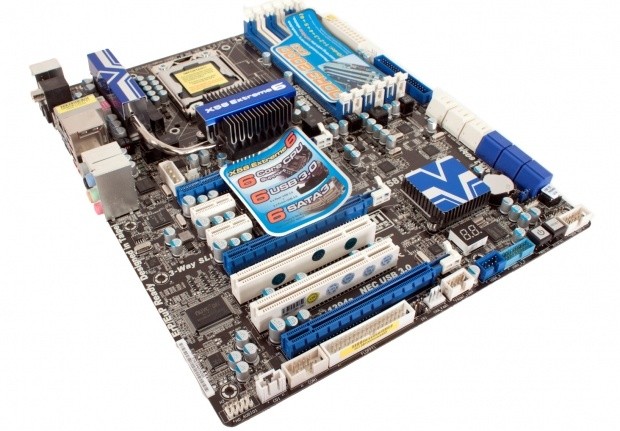

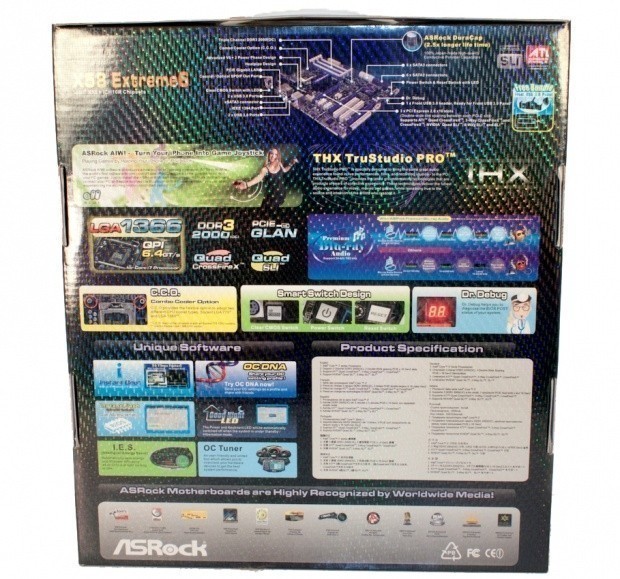
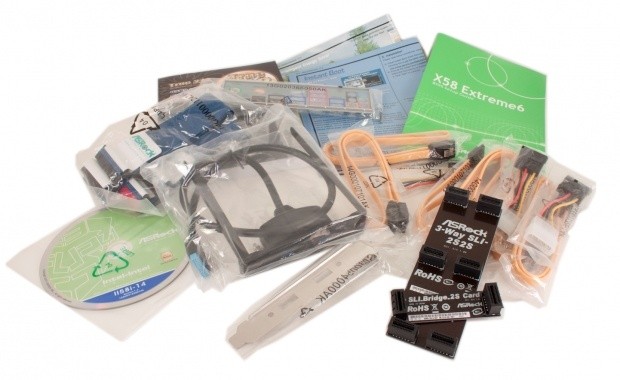
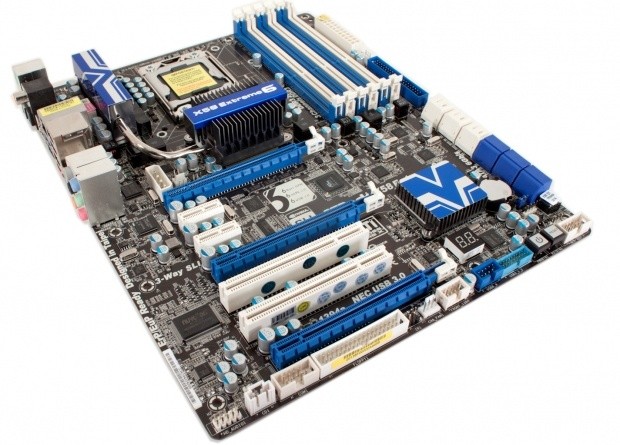
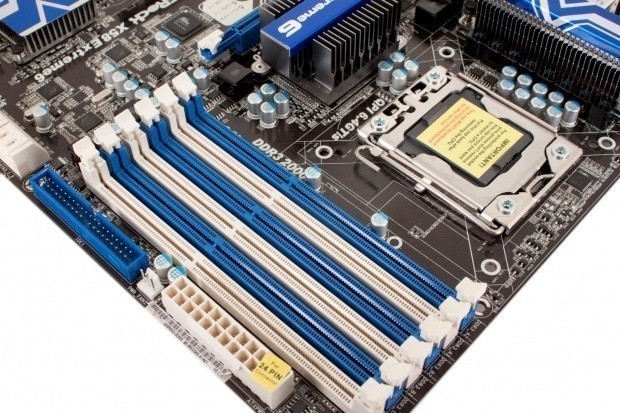
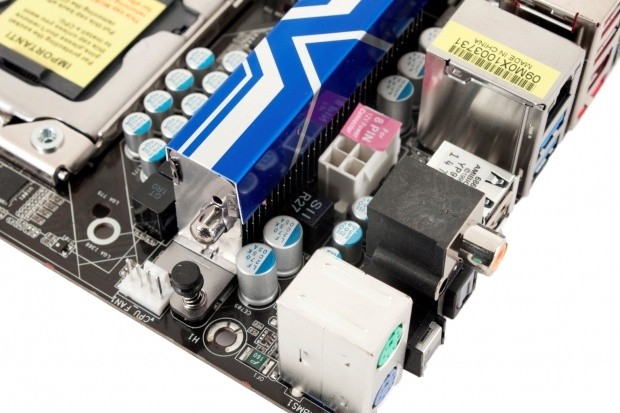
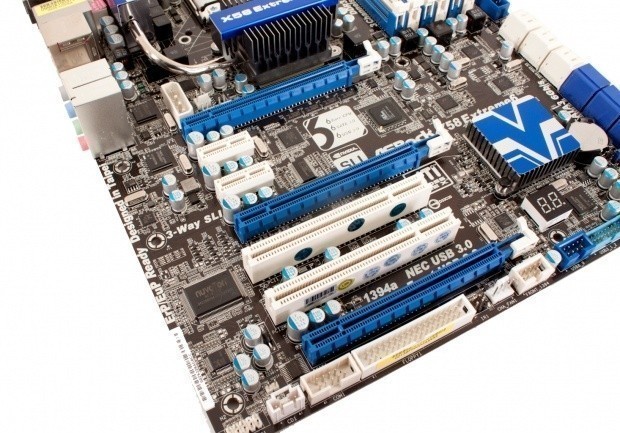
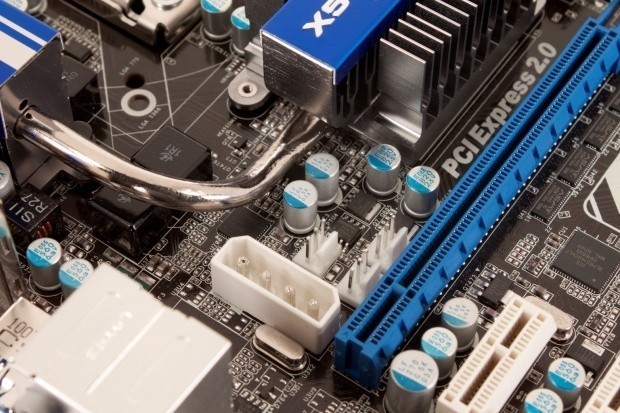

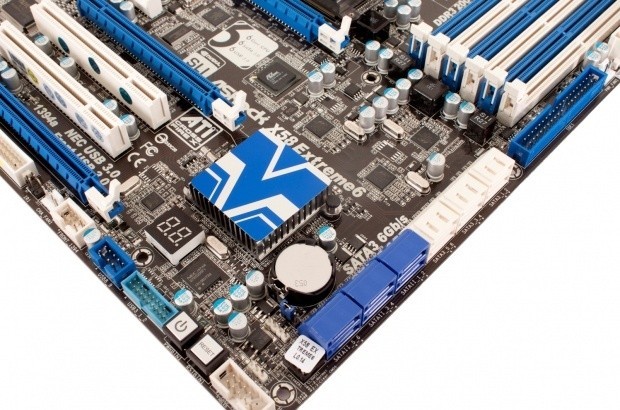
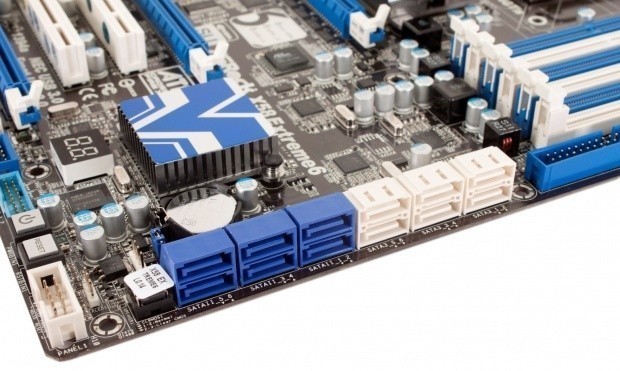
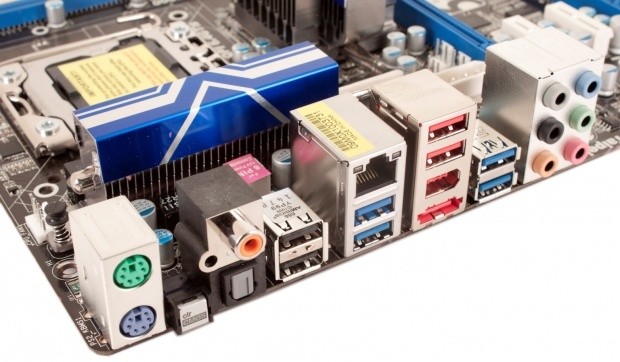
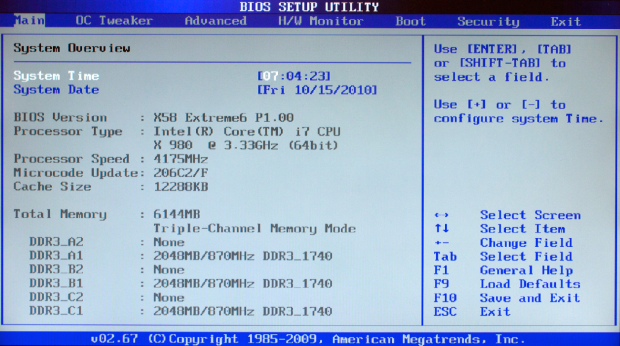


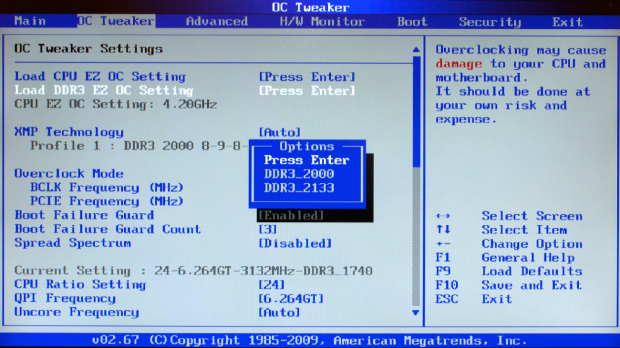


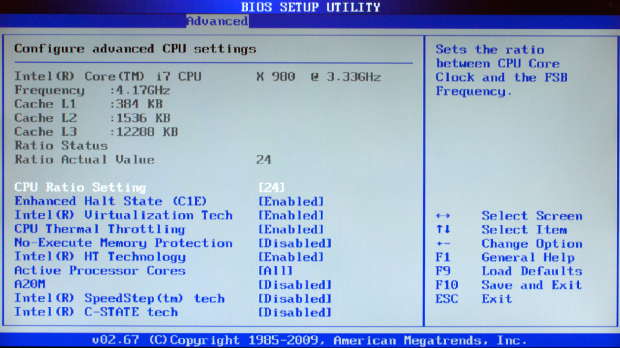














 United
States: Find other tech and computer products like this
over at
United
States: Find other tech and computer products like this
over at  United
Kingdom: Find other tech and computer products like this
over at
United
Kingdom: Find other tech and computer products like this
over at  Australia:
Find other tech and computer products like this over at
Australia:
Find other tech and computer products like this over at  Canada:
Find other tech and computer products like this over at
Canada:
Find other tech and computer products like this over at  Deutschland:
Finde andere Technik- und Computerprodukte wie dieses auf
Deutschland:
Finde andere Technik- und Computerprodukte wie dieses auf